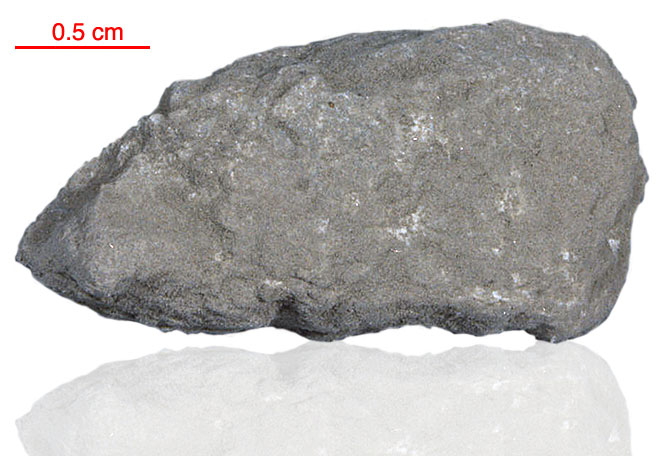
Fact sheet
73225 is a light grey breccia that is equant. It is tough, crystalline, homogeneous, and originally described as a meta-polymict breccia. It contains some large plagioclase feldspar crystals and is most likely to be an impact melt breccia; possibly a granoblastic impactite. A thin vein of black glass penetrates the rock. 73225 was picked from a regolith sample collected from the upper part of a trench wall. It has never been subdivided or allocated. Our thin section is thick so birefringence colours are anomalous.
The sample weighed 3.66 grams before analysis and has not been dated.
Further details of this and other Apollo samples are here: http://curator.jsc.nasa.gov/lunar/
Apollo 17, the final manned landing mission, had two objectives: to obtain samples of ancient rocks from the lunar highlands and to look for evidence of younger volcanic activity on the valley floor.
This small Collection contains material deriving from both periods, including igneous rocks around 4.3 billion years old from the lunar highlands as well as younger volcanic samples dating from about 3.6 billion years ago.
Apollo 17 was launched on 7 December 1972.






